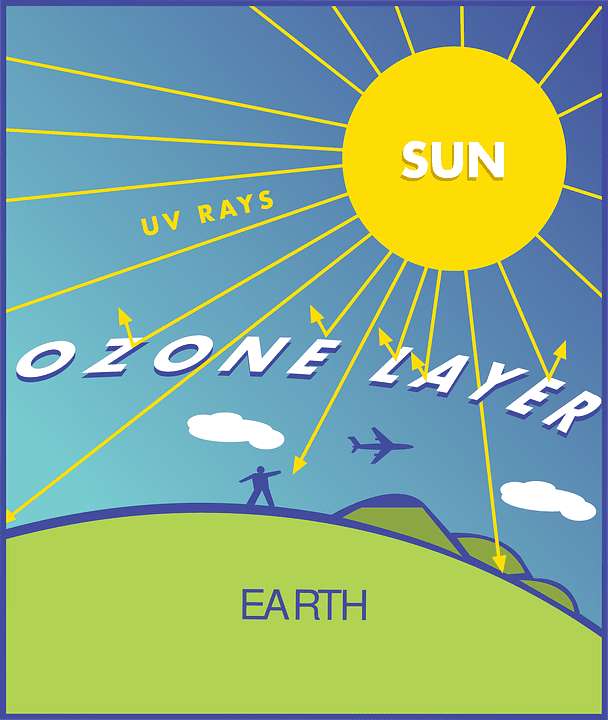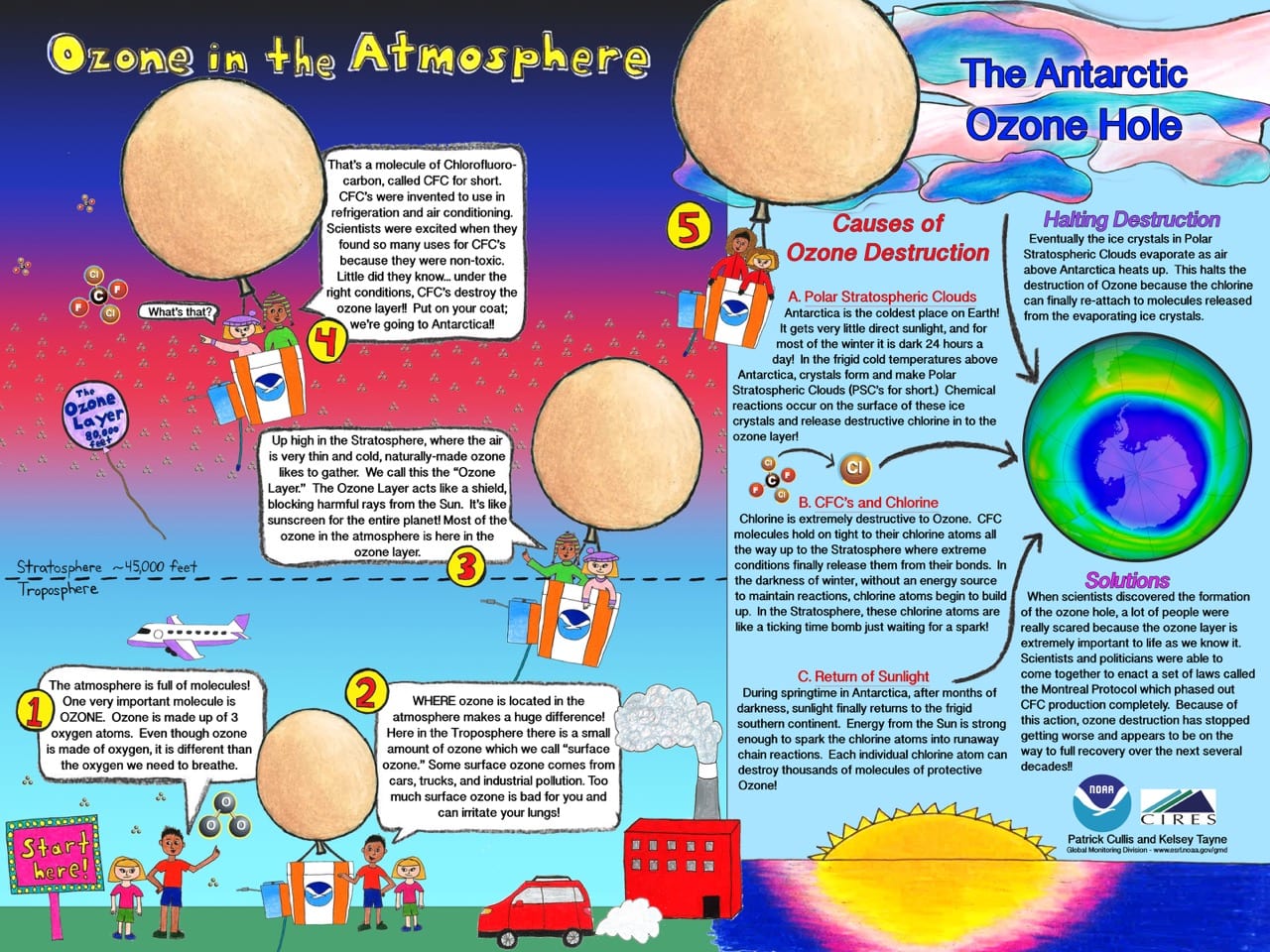In honor of September 16th, otherwise known as World Ozone Day, let's spend some time talking about ozone in Earth's atmosphere! You may be wondering why ozone is significant enough to have its own designated day of acknowledgement. To answer this question we need to dive into a little bit of history involving early measurements of atmospheric ozone, NASA, and policy.
Why study stratospheric ozone?
The ozone layer in the atmosphere is one of the reasons life as we know it can exist on Earth, so it is essential for our own existence that we are constantly monitoring its state. Without it, we would be constantly hit with harmful ultraviolet (UV) radiation (UV-B as opposed to UV-A) from the sun that would make living conditions quite unpleasant: we would be constantly sunburnt, our DNA would be damaged, and we'd be at a dramatically increased risk of getting cancer. Additionally, plants cannot thrive in environments with high UV-B radiation, so our resources would be extremely limited or nonexistent. UV-B exposure impairs the productivity of phytoplankton, so ocean life would also suffer because several marine species rely on plankton as a source of food. So, we must monitor the ozone layer with spacecraft like the ones we will discuss below to ensure we can continue to live on this planet knowing we will have food to eat.

How was the ozone layer discovered?
After the discovery of the ozone molecule, scientists began to study the amount of UV radiation from the sun that was reaching Earth. In these studies, the researchers noticed a sharp cut off point in the atmosphere where the UV radiation was essentially being blocked from going any further toward Earth's surface. As it turns out, this blockage is because there is a layer of ozone in the stratosphere that absorbs most of the UV radiation from the sun.
Since the discovery of the ozone layer in the atmosphere, several others decided to study this layer and take measurements of it. For the next 40 years or so, scientists continued to conduct more studies on the stratospheric ozone layer to better characterize it. However, it was not until 1970 that it was discovered that the ozone layer was being damaged, and that the damage was likely because of manmade ozone-depleting substances (ODSs). This damage had, at the time, been occurring for at least the last 50 years, and it would continue to do so if some kind of limitation on ODSs were not put in place.
What are we doing about ozone-depleting substances?
ODSs came mainly in the form of chlorofluorocarbons (CFCs), which were mainly used as refrigerants and inert carriers for chemical sprays. CFCs became commonplace upon their advent in 1928, and since then they have been reacting with our ozone layer. When UV rays hit a CFC, it gets broken up into elemental chlorine, which then reacts with the ozone molecule, splitting it into an oxygen atom and an oxygen molecule. Since the discovery of the human-driven depletion of the ozone layer, several countries decided to band together to come up with a solution to potentially reverse this problem. The solution was an international treaty called the Montreal Protocol on Substances that Deplete the Ozone Layer, in which nations from all over the world agreed to phase out the production of ODSs such as refrigerants. The protocol was agreed upon on September 16th, 1987 (now World Ozone Day!), and put into action on January 1st, 1989.
To convince policymakers that ozone layer depletion was a serious issue to be discussed on the international scale, scientists at the National Aeronautics and Space Administration (NASA) used several measurements from a family of instruments known as the Stratospheric Aerosol and Gas Experiment (SAGE). Measurements from SAGE II were particularly useful, since the instrument was collecting data during the meetings for the Montreal Protocol. SAGE II has shown that the ozone layer has been recovering since the protocol was put in place, so NASA decided to continue to monitor that recovery with two more iterations of the SAGE series: SAGE III on the Russian Meteor 3M Spacecraft, and SAGE III on the International Space Station (ISS).

What is next for the ozone layer?
Climate projections predict that the ozone layer will return to its 1980 state some time between 2050 and 2070. The reparation of the stratospheric ozone layer will take several years because the chemicals that caused the damage in the first place unfortunately remain in the atmosphere for several decades once they are emitted. Until then, humans are at greater risk of the harmful effects of UV radiation, so make sure you are protecting yourself whenever you are exposed to the sun!
Featured Image Credit: NASA Earth Observatory

About the Author
- athenssciencecafehttps://athensscienceobserver.com/author/athenssciencecafe/April 17, 2020
- athenssciencecafehttps://athensscienceobserver.com/author/athenssciencecafe/April 12, 2020
- athenssciencecafehttps://athensscienceobserver.com/author/athenssciencecafe/April 3, 2020
- athenssciencecafehttps://athensscienceobserver.com/author/athenssciencecafe/March 30, 2020







